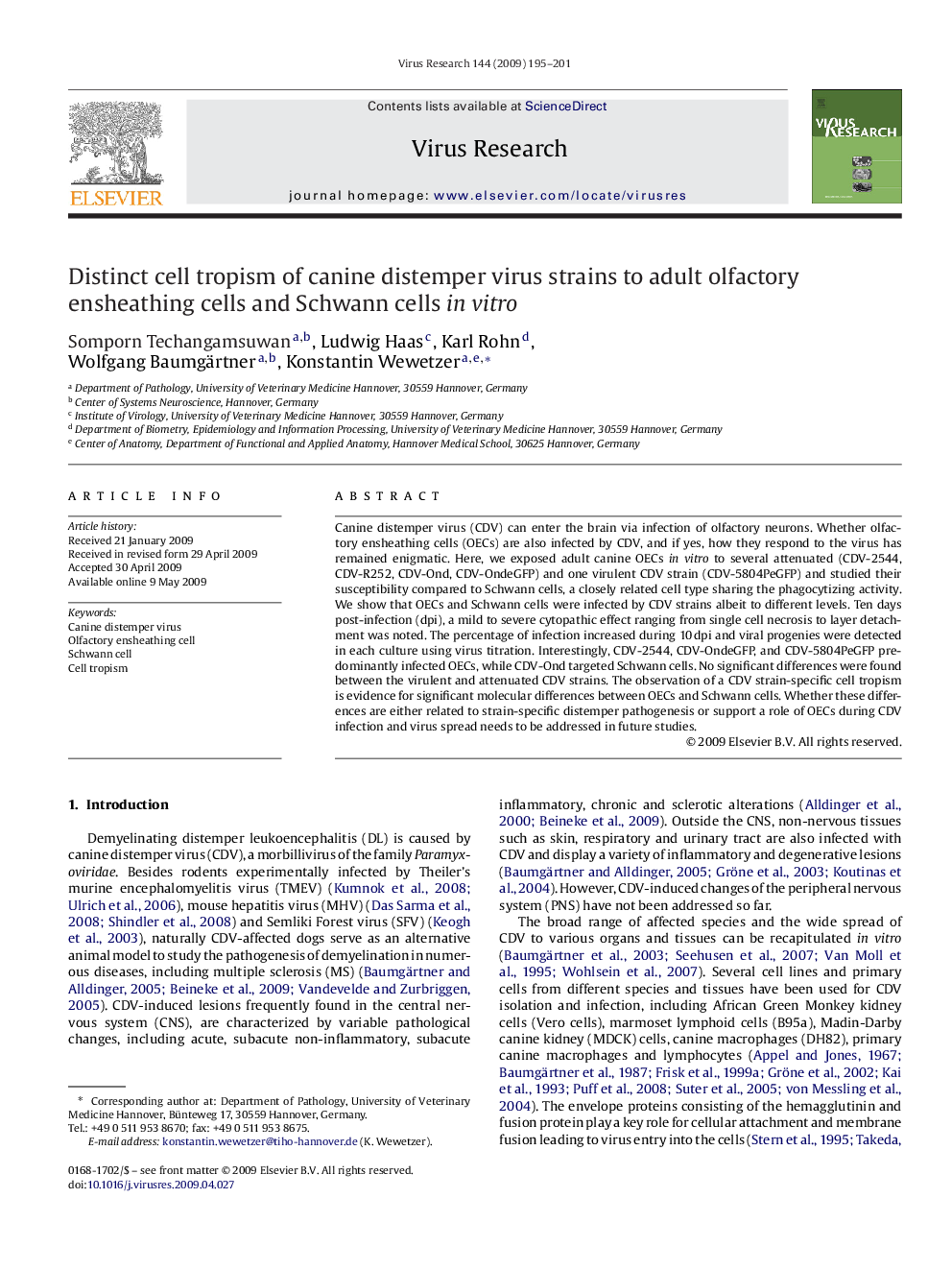| Article ID | Journal | Published Year | Pages | File Type |
|---|---|---|---|---|
| 3429677 | Virus Research | 2009 | 7 Pages |
Canine distemper virus (CDV) can enter the brain via infection of olfactory neurons. Whether olfactory ensheathing cells (OECs) are also infected by CDV, and if yes, how they respond to the virus has remained enigmatic. Here, we exposed adult canine OECs in vitro to several attenuated (CDV-2544, CDV-R252, CDV-Ond, CDV-OndeGFP) and one virulent CDV strain (CDV-5804PeGFP) and studied their susceptibility compared to Schwann cells, a closely related cell type sharing the phagocytizing activity. We show that OECs and Schwann cells were infected by CDV strains albeit to different levels. Ten days post-infection (dpi), a mild to severe cytopathic effect ranging from single cell necrosis to layer detachment was noted. The percentage of infection increased during 10 dpi and viral progenies were detected in each culture using virus titration. Interestingly, CDV-2544, CDV-OndeGFP, and CDV-5804PeGFP predominantly infected OECs, while CDV-Ond targeted Schwann cells. No significant differences were found between the virulent and attenuated CDV strains. The observation of a CDV strain-specific cell tropism is evidence for significant molecular differences between OECs and Schwann cells. Whether these differences are either related to strain-specific distemper pathogenesis or support a role of OECs during CDV infection and virus spread needs to be addressed in future studies.
